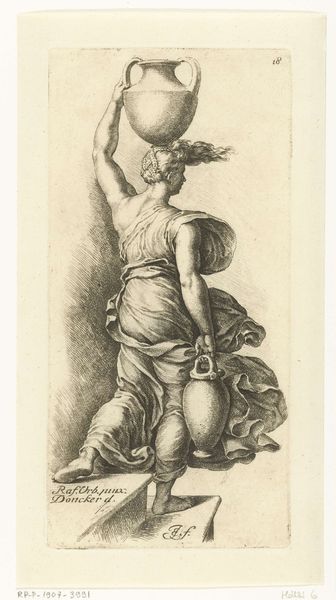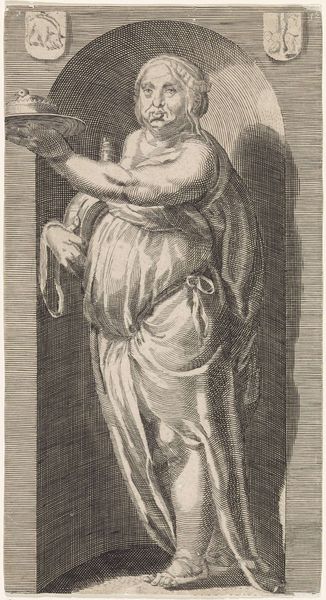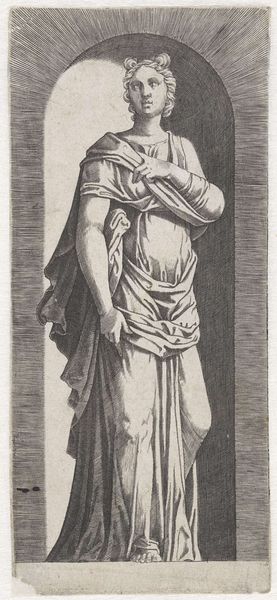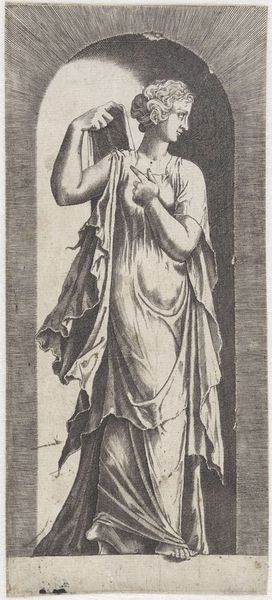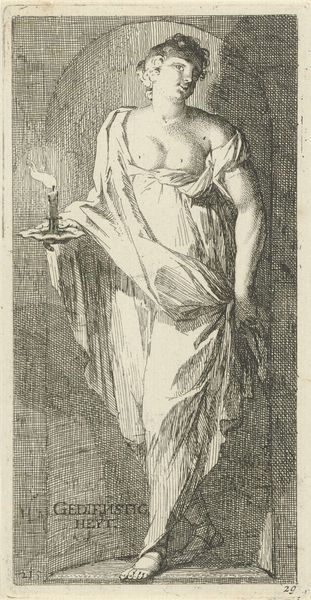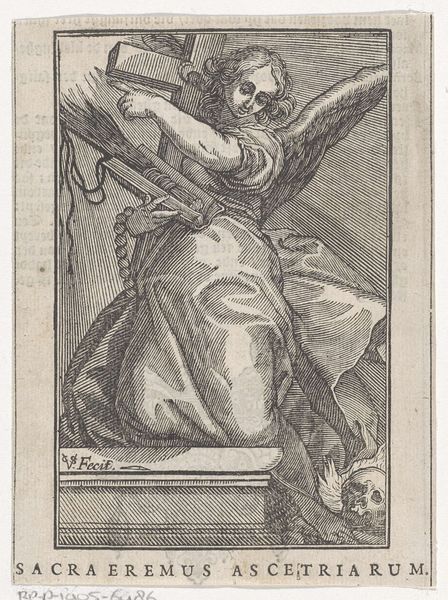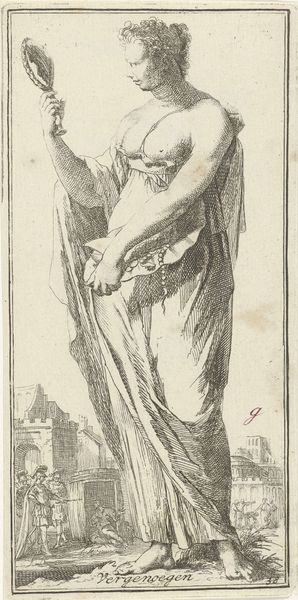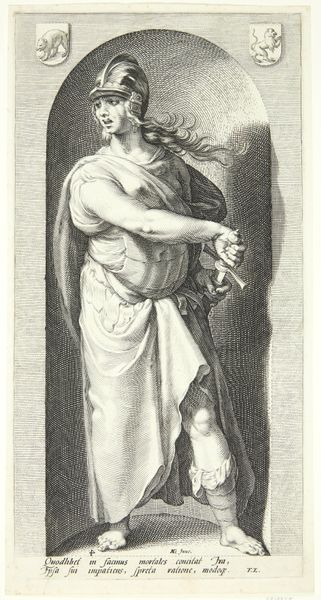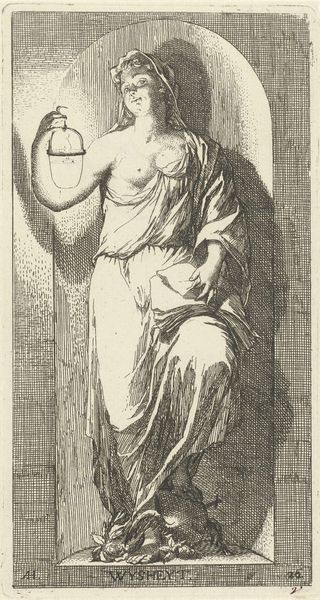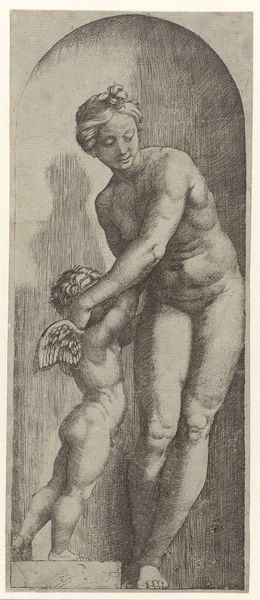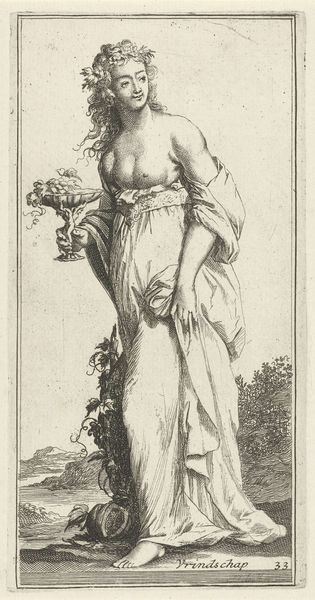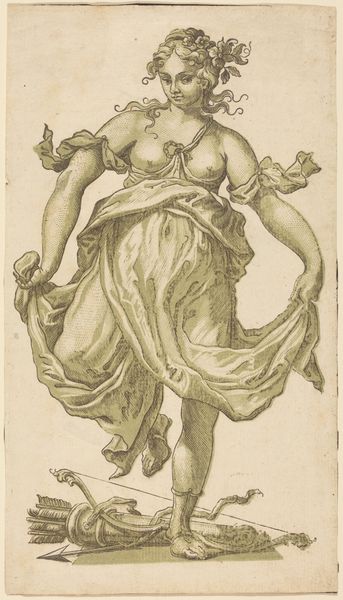
drawing, print, etching, engraving
#
portrait
#
drawing
#
baroque
# print
#
etching
#
classical-realism
#
figuration
#
history-painting
#
academic-art
#
nude
#
engraving
Dimensions: height 240 mm, width 113 mm
Copyright: Rijks Museum: Open Domain
Curator: Jan de Bisschop's "Personification of Sculpture," created before 1668, presents us with an allegorical figure, rendered meticulously through etching, engraving, and drawing techniques. It's held here at the Rijksmuseum. Editor: The first thing that strikes me is the density of line. It's incredible how much texture and tonal range he achieves, seemingly just from the crosshatching. It really mimics the density of sculpted stone. Curator: Indeed. Let's consider the role of sculpture itself during the Baroque period and the academic framework that shaped artistic production. This idealized female figure, draped in classical garb, isn’t simply a depiction of beauty but embodies the very spirit of sculpture, a creative force closely associated with power and civic virtue. The gaze drifts toward the object in hand, as if pondering its very existence, a subtle hint towards intellectual prowess associated with women that may seem at odds to the very tradition of representing them. Editor: I see it slightly differently. The process is central: etching and engraving themselves are methods of direct material manipulation. De Bisschop used line and pressure to conjure not just an image, but to explore how materiality can suggest solidity and volume. Notice the almost industrial quality of the crosshatching—how that method of building form mimics the careful accumulation involved in sculpting. I wonder how accessible this print was for budding artists wanting to master this craft, as de Bisschop himself initially struggled to gain acclaim in the artist world. Curator: The choice of presenting sculpture in a printed form speaks to shifts in how art was disseminated. By creating prints of classical figures, de Bisschop makes available this high form of culture to a wider audience—although we must ask who this 'wider audience' was and how did race, gender, and class figure into art consumption? It moves us from elite patronage to a nascent art market, democratizing, in some senses, cultural appreciation through wider availability of images. Editor: Yes, absolutely. The shift in how artistic skill and classical imagery was circulated had radical potential implications in workshop economies. These prints served not only to circulate art but skills that people may not have had. The ready availability of models—how to present, drape, shadow, all those are contained within this one print. That this all hinges on copper and acid adds further nuance. The seemingly straightforward image really explodes upon consideration of its processes and background conditions of production and material life. Curator: The exploration of process as cultural dissemination of the old masters, and the questions around women and creation that these representations generate certainly do open it up to many varied interpretations. Editor: Absolutely, and thinking about those social shifts provides us a view into how materials impacted production itself.
Comments
No comments
Be the first to comment and join the conversation on the ultimate creative platform.
